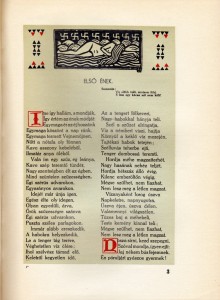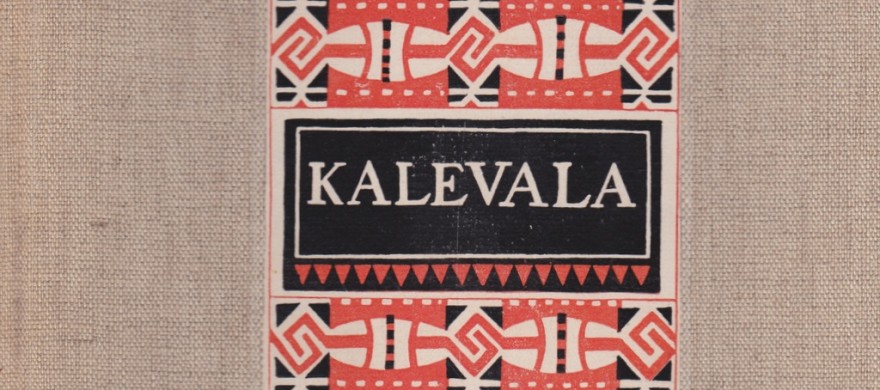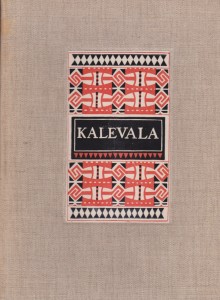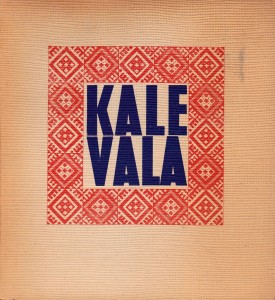Béla Vikár’s later editions of the Kalevala
Gyula Weöres, who has written several articles on the Hungarian translations and translators of the Kalevala, has specified the changes that the Kalevala by Béla Vikár underwent between the first edition from 1909 and the second edition that was published in 1935.
The edition from 1935 is a magnificent festive publication which is illustrated with the illustrations by Akseli Gallen-Kallela from the Kalevala Decorated. This book also contains, among other things, a comprehensive separate appendix with explanations by the translator, a poetically beautiful introduction by the author Kosztolányi and closing words by Imre Balassa, who was the secretary for the publishing association La Fontaine.

The first poem in Béla Vikár’s Kalevala 1935. The second edition is illustrated with illustrations by Akseli Gallen-Kallela from the Kalevala Decorated.
In this edition, Vikár modernised the language to be more close to the literary language in Hungary in the 1930’s. He corrected the outdated forms of past tense to present or perfect tense. This had a huge impact on the end rhymes and the whole verses.
Béla Vikári’s own poetic voice and his personality can be seen, specifically, in the summarising poems with 2–8 verses. Weöres says: “In these small poems you can see a lot of fresh humour, which resembles the stingy taste of bell pepper, something that is characteristic for the translator”. According to Weöres, they show “how perfectly the translator was able to empathize with the spirit of the Kalevala even when he drew from his own poetic treasure chest, his rich supply of songs that were influenced by Hungarian epic poetry.
An example of the summaries by Vikár, translated by Gyula Weöres.
| Mi van a dalládikóban? Biz ott mindenféle jó van, Több mint némely házikóban: Szövőszék, mult es jövö Képeit, nőttön-növő Szépség szállait szövő. |
Mitä on laululippaassa? Siinä on kaikenlaista hyvää, Enemmän kuin jossain tupasessa: Menneen ja tulevan kuvia, Kasvavan kauneuden lankoja Kutovat kangaspuut. |
The political situation is reflected in the new editions
According to Gyula Weöres, the interest in Finland in Hungary reached its peak around 1940. This is most certainly a consequence of the battles and sufferings that the sister nation had to endure during the Winter War. The third edition of Vikár’s translation of the Kalevala was, at that point of time, published as an affordable version with a foreword, introductory poems and brief explanations. The fourth edition was published in 1943 without the foreword and introductory poems but it was completed by a relatively extensive presentation by Pál Gulyás on the origin of the Kalevala, its contents and meaning. The third and fourth editions were dedicated to the memory of Kyösti Kallio. Béla Vikár got to hold these editions in his own hands, before he died in 1945. The fifth edition is from 1950 and it contains a preface by Otto Ville Kuusinen. It is also outlined according to his theory.
Guyla Weöres: ”Béla Vikárin Kalevala-käännös” – Kalevalaseuran vuosikirja 38. Helsinki: WSOY. 1958.


